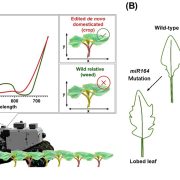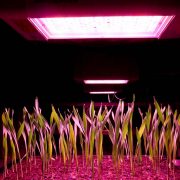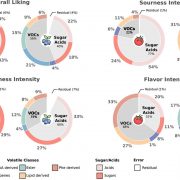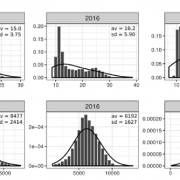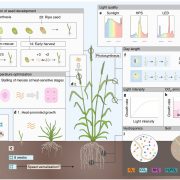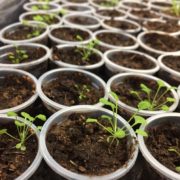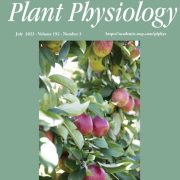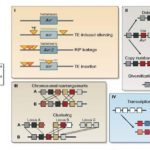Genomic regions associated with economic traits in walnut (Plant Breeding)
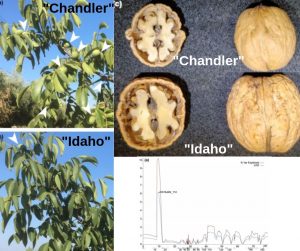 The bearing habit refers to the location of flower buds in woody plants. For walnut cultivars, lateral bearing is preferred for its yield superiority. Deciphering its genetic architecture would improve seedling and sapling selection. Here, Aradhya et al. performed a SNP-based linkage map to estimate genetic effects of quantitative trait loci (QTLs) for 5 yield attributes in the Persian walnut (Juglans regia L.): lateral bearing, harvest date, shell thickness, nut weight and kernel fill. Using phenotype data from F1 trees from contrasting heterozygous genotypes, “Chandler” (lateral bearing) x “Idaho” (terminal bearing). “Chandler”-based SNP array was used to mapped 2,220 SNPs markers into 16 linkage groups (LG). By a two-step strategy major effect QTLs were located, single QTL model followed by multiple QTL model (MQM), which uses neighbouring linked markers as cofactors reducing residual variation. For lateral bearing expression, a single major QTL in LG 11 showed negative additive effects, inferring its heterozygote superiority. Harvest time and all three nut traits appeared to be under the control of linked pleiotropic QTLs on LG 1 with marginal additive effects. (Summary by Ana Valladares). Plant Breeding. 10.1111/pbr.12703
The bearing habit refers to the location of flower buds in woody plants. For walnut cultivars, lateral bearing is preferred for its yield superiority. Deciphering its genetic architecture would improve seedling and sapling selection. Here, Aradhya et al. performed a SNP-based linkage map to estimate genetic effects of quantitative trait loci (QTLs) for 5 yield attributes in the Persian walnut (Juglans regia L.): lateral bearing, harvest date, shell thickness, nut weight and kernel fill. Using phenotype data from F1 trees from contrasting heterozygous genotypes, “Chandler” (lateral bearing) x “Idaho” (terminal bearing). “Chandler”-based SNP array was used to mapped 2,220 SNPs markers into 16 linkage groups (LG). By a two-step strategy major effect QTLs were located, single QTL model followed by multiple QTL model (MQM), which uses neighbouring linked markers as cofactors reducing residual variation. For lateral bearing expression, a single major QTL in LG 11 showed negative additive effects, inferring its heterozygote superiority. Harvest time and all three nut traits appeared to be under the control of linked pleiotropic QTLs on LG 1 with marginal additive effects. (Summary by Ana Valladares). Plant Breeding. 10.1111/pbr.12703


